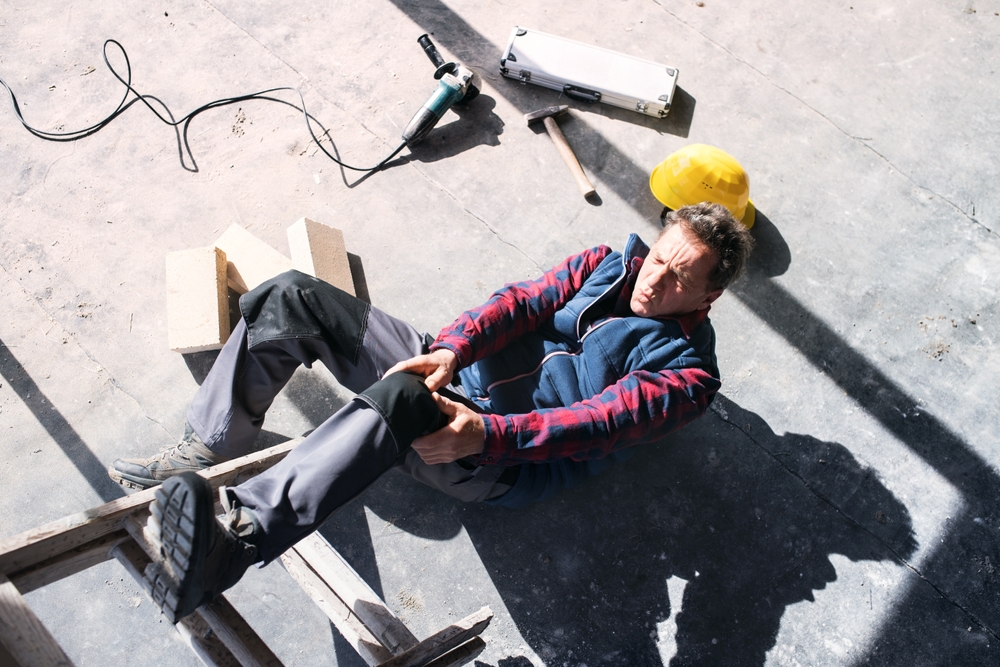Modal Title
Lorem ipsum dolor, sit amet consectetur adipisicing elit. Iusto porro officiis beatae accusantium nam quis soluta? Sapiente in non inventore, explicabo distinctio, nostrum impedit delectus obcaecati corporis officiis, nihil repellendus.

Lorem ipsum dolor, sit amet consectetur adipisicing elit. Iusto porro officiis beatae accusantium nam quis soluta? Sapiente in non inventore, explicabo distinctio, nostrum impedit delectus obcaecati corporis officiis, nihil repellendus.

Blog:Slip and Fall Accidents on Construction Sites: Causes, Prevention, and Legal Recourse

Construction sites are inherently hazardous environments. With constantly changing terrain, heavy machinery, and the presence of various subcontractors, accidents are not uncommon. Among the most frequent incidents are slip and fall accidents, which can result in serious injuries and complex legal challenges. For property owners, understanding the causes, prevention strategies, and available legal recourse is essential.
Slip and fall accidents on construction sites often stem from preventable hazards, including:
Uneven or Unstable Surfaces: Exposed rebar, unmarked holes, and uneven ground can quickly become tripping hazards.
Wet or Slippery Conditions: Spilled liquids, mud, or weather-related moisture can make walkways treacherous.
Improper Housekeeping: Debris, unused materials, and tools left in walkways significantly increase the risk of falls.
Inadequate Lighting: Poor visibility can hide hazards and increase the chances of an accident.
Lack of Warning Signs: Failure to mark dangerous areas or alert workers and visitors about ongoing work can lead to injuries.
While contractors have a duty to maintain a safe construction site, property owners must remain vigilant to ensure these responsibilities are met. One of the most effective prevention strategies is conducting regular inspections. Frequent site walkthroughs allow property owners to identify potential hazards before they can cause harm, ensuring that any issues are promptly addressed.
Clear communication with your contractor is also crucial. Maintaining open channels of communication makes it easier to address any concerns as soon as they arise. This proactive approach helps ensure that everyone on the site is aware of safety expectations and any immediate risks that need attention.
Enforcing safety protocols is another key strategy. Property owners should insist that contractors and subcontractors follow proper safety procedures and housekeeping standards at all times. This includes ensuring that walkways are clear, materials are stored safely, and safety signage is visible.
Finally, thorough documentation is essential. Keeping detailed records of all communications, inspections, and identified hazards not only supports a safer work environment but can also serve as important evidence if disputes arise. By taking these steps, property owners can play an active role in preventing slip and fall accidents and protecting their interests.
If a slip and fall accident occurs on your construction site, the aftermath can lead to disputes over liability. As a property owner, you have the right to expect contractors to uphold their safety obligations. When they fail to do so, you may need to seek legal recourse to protect your interests.
At Whitehead Law Office, our practice is dedicated to defending property owners’ rights. We help clients:
Assess Liability: Determine whether the contractor’s negligence contributed to the accident.
Navigate Insurance Claims: Assist with filing claims and negotiating with insurance companies to secure fair outcomes.
Pursue Legal Action: If necessary, we can pursue litigation against negligent contractors to recover damages and enforce contractual obligations.
Slip and fall accidents on construction sites can have serious financial and legal consequences for property owners. By understanding the causes, prevention strategies and by acting quickly when an accident occurs, you can safeguard your investment and ensure that contractors are held accountable for maintaining a safe environment.
If you are a property owner dealing with a slip and fall accident on your construction site, contact Whitehead Law Office for a consultation and let us help you protect your interests every step of the way. Contact our office in Provo, Utah, by calling (801) 877-7333 to schedule a consultation today.